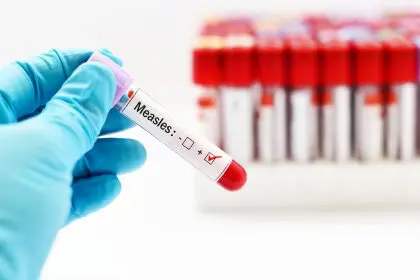Menopause brings numerous changes to a woman’s body, but perhaps none is as silent yet potentially devastating as the accelerated loss of bone density. This process begins subtly, often without symptoms, yet can lead to significant health consequences if left unaddressed.
During the reproductive years, women’s bones remain relatively stable through a carefully orchestrated balance of bone formation and breakdown. However, the hormonal shifts that characterize menopause disrupt this delicate equilibrium, tipping the scales dramatically toward bone loss.
Understanding the mechanisms behind menopausal bone density loss empowers women to take proactive steps to protect their skeletal health. The changes that occur during this life transition are predictable and well-understood, making prevention and intervention strategies highly effective when implemented properly.
The impact of bone loss extends far beyond the bones themselves, affecting overall quality of life, independence, and long-term health outcomes. Recognizing the importance of bone health during menopause represents a crucial step in maintaining vitality and strength throughout the later decades of life.
The estrogen connection
Estrogen serves as the primary guardian of bone health in women throughout their reproductive years. This hormone plays multiple crucial roles in maintaining bone density by regulating the activity of cells responsible for both bone formation and breakdown.
When estrogen levels remain adequate, it inhibits the activity of osteoclasts, the cells that break down bone tissue. Simultaneously, estrogen supports osteoblasts, the cells responsible for building new bone. This dual action maintains the careful balance necessary for healthy bone remodeling throughout life.
The dramatic decline in estrogen production during menopause removes this protective influence, causing osteoclast activity to increase significantly while osteoblast function becomes less efficient. This imbalance results in bone breakdown occurring much faster than new bone formation can keep pace.
The rate of bone loss accelerates most rapidly during the first five years following menopause, when estrogen levels drop most precipitously. During this period, women can lose up to 20 percent of their total bone density, with the spine and hips being particularly vulnerable areas.
Estrogen deficiency also affects the absorption and utilization of calcium, the primary mineral component of bones. Without adequate estrogen, the body becomes less efficient at absorbing calcium from food sources and maintaining proper calcium balance in the bloodstream.
The cascade of hormonal changes
While estrogen receives the most attention in discussions of menopausal bone loss, other hormonal changes during this transition also contribute to declining bone density. The interconnected nature of the endocrine system means that changes in one hormone inevitably affect others.
Progesterone levels also decline during menopause, though this hormone’s role in bone health differs from estrogen’s protective effects. Progesterone appears to stimulate bone formation directly, and its absence during menopause removes another layer of skeletal protection.
Testosterone, though present in much smaller quantities in women than men, also plays a role in maintaining bone density. Levels of this hormone decline with age and menopause, further contributing to the overall hormonal environment that promotes bone loss.
The parathyroid hormone system becomes more active during menopause, partly in response to changes in calcium metabolism. This increased activity can lead to calcium being pulled from bones to maintain blood calcium levels, contributing to overall bone density decline.
Growth hormone production also decreases with age and menopause, reducing the body’s ability to maintain and repair bone tissue. This decline affects not only bone density but also the quality and strength of existing bone structure.
The inflammatory factor
Menopause triggers changes in the body’s inflammatory response that directly impact bone health. The decline in estrogen allows inflammatory processes to become more active, creating an environment that promotes bone breakdown while inhibiting bone formation.
Inflammatory cytokines, chemical messengers that coordinate immune responses, increase during menopause. These substances can directly stimulate osteoclast activity, accelerating bone resorption beyond normal levels. The inflammatory environment also interferes with the normal signaling pathways that regulate bone remodeling.
Chronic inflammation affects the body’s ability to absorb and utilize nutrients essential for bone health. Vitamins D and K, calcium, magnesium, and other bone-supporting nutrients become less available for incorporation into bone tissue when inflammatory processes are elevated.
The inflammatory changes of menopause also affect sleep quality, stress responses, and overall energy levels. These secondary effects can indirectly impact bone health by affecting lifestyle factors that influence bone density, such as physical activity levels and nutritional choices.
Managing inflammation through dietary choices, stress reduction, and other lifestyle interventions can help minimize its impact on bone health during menopause. Anti-inflammatory approaches work synergistically with other bone-protective strategies to maintain skeletal strength.
Calcium metabolism disruption
The hormonal changes of menopause significantly disrupt calcium metabolism, affecting how the body absorbs, utilizes, and retains this essential bone mineral. These disruptions occur at multiple levels, from intestinal absorption to kidney excretion.
Estrogen deficiency reduces the efficiency of calcium absorption in the intestines, meaning that even adequate dietary calcium intake may not provide sufficient amounts for bone maintenance. The body’s ability to convert vitamin D into its active form also becomes less efficient, further compromising calcium absorption.
The kidneys begin excreting more calcium in the urine during menopause, increasing the body’s overall calcium losses. This increased excretion occurs partly due to changes in hormonal regulation and partly as a result of altered acid-base balance in the body.
Calcium balance becomes increasingly negative during menopause, meaning that more calcium leaves the body than enters it through dietary sources. To maintain blood calcium levels, which are essential for heart function and other vital processes, the body pulls calcium from the bones.
The disruption in calcium metabolism creates a situation where even women who consume adequate amounts of calcium through diet or supplements may still experience bone loss. Addressing calcium metabolism requires a comprehensive approach that considers absorption, utilization, and retention factors.
The role of physical activity changes
Many women experience changes in their activity levels during menopause, often due to fatigue, joint discomfort, or other symptoms associated with hormonal changes. These activity reductions can significantly accelerate bone loss beyond what occurs from hormonal changes alone.
Bones respond to mechanical stress by becoming stronger and denser. When physical activity decreases, bones receive less stimulation for maintenance and growth. This reduced mechanical loading signals the body that less bone mass is needed, contributing to accelerated bone loss.
Weight-bearing activities provide the most beneficial stimulus for bone health, but many women reduce these activities during menopause. Walking, dancing, hiking, and resistance training all provide mechanical stress that helps maintain bone density when performed regularly.
The loss of muscle mass that often accompanies menopause also contributes to bone density decline. Muscles and bones work together as an integrated system, with muscle contractions providing forces that stimulate bone maintenance and growth.
Balance and coordination may also decline during menopause, leading some women to avoid activities they previously enjoyed. This avoidance, while protective against falls, can inadvertently contribute to both muscle and bone loss over time.
Nutritional absorption challenges
Menopause affects the digestive system in ways that can compromise the absorption of nutrients essential for bone health. These changes occur gradually and may not be immediately apparent, but their cumulative effect on bone density can be significant.
Stomach acid production often decreases during menopause, affecting the body’s ability to break down and absorb minerals from food sources. Calcium, magnesium, and other bone-supporting minerals require adequate stomach acid for proper absorption.
The intestinal lining may become less efficient at absorbing nutrients during menopause, partly due to hormonal changes and partly due to age-related changes in digestive function. This reduced efficiency affects not only mineral absorption but also vitamin absorption.
Gut bacteria populations can shift during menopause, potentially affecting the production of certain vitamins and the overall health of the digestive tract. A healthy gut microbiome plays important roles in nutrient absorption and immune function that indirectly support bone health.
Many women experience changes in appetite, food preferences, or eating patterns during menopause. These changes can lead to reduced intake of bone-supporting nutrients, compounding the absorption challenges that already exist.
The stress hormone impact
The transition through menopause can be a stressful time for many women, and chronic stress produces hormonal changes that directly impact bone health. Elevated cortisol levels, the body’s primary stress hormone, can significantly accelerate bone loss.
Cortisol interferes with bone formation by inhibiting osteoblast activity while simultaneously increasing bone breakdown through enhanced osteoclast function. This dual effect makes chronic stress particularly damaging to bone health during the vulnerable menopausal period.
Stress hormones also interfere with the absorption and utilization of calcium and other bone-supporting nutrients. They can affect sleep quality, which is essential for bone repair and regeneration processes that occur primarily during deep sleep phases.
The lifestyle changes that often accompany chronic stress, such as poor dietary choices, reduced physical activity, and inadequate sleep, create additional challenges for maintaining bone health during menopause.
Managing stress through relaxation techniques, regular exercise, social support, and other healthy coping strategies can help minimize its impact on bone density. Stress management becomes particularly important during the menopausal transition when bones are already vulnerable to other factors.
Protecting bone health during menopause
Understanding the multiple factors that contribute to menopausal bone loss enables women to develop comprehensive strategies for protecting their skeletal health. Effective bone protection requires addressing hormonal, nutritional, lifestyle, and environmental factors simultaneously.
Weight-bearing exercise remains one of the most powerful tools for maintaining bone density during menopause. Activities that challenge balance and coordination while providing mechanical stress to bones offer the greatest benefits for long-term skeletal health.
Nutritional strategies must go beyond simple calcium supplementation to address the complex interplay of nutrients required for bone health. Vitamin D, vitamin K, magnesium, and protein all play crucial roles in maintaining bone density and strength.
Lifestyle modifications that support overall health also benefit bone health during menopause. Adequate sleep, stress management, avoiding smoking and excessive alcohol consumption, and maintaining a healthy body weight all contribute to better bone health outcomes.
Regular monitoring of bone density through appropriate testing allows for early detection of problems and adjustment of prevention strategies. Early intervention can significantly improve long-term outcomes and quality of life for women navigating the menopausal transition.














